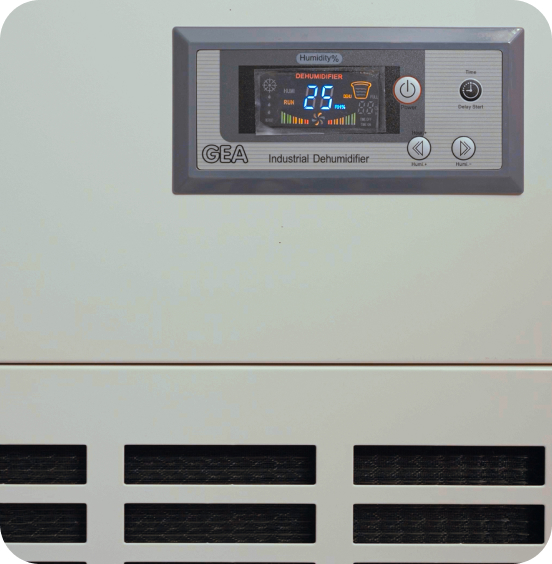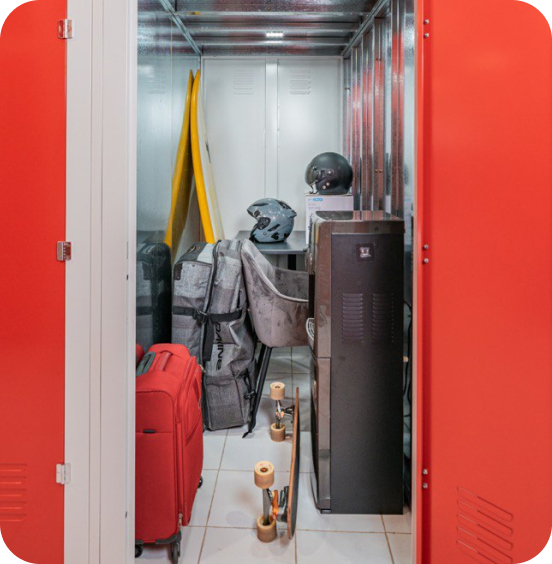Mold can destroy your clothes and belongings, especially in humid places like Bali. Anyone who’s traveled to tropical destinations knows the struggle – you open your suitcase to find that musty smell or worse, visible mold spots on your favorite shirt.
In this blog, we’ll explore how humidity wreaks havoc on fabrics and why storing your stuff in a climate-controlled storage isn’t just smart – it’s necessary if you want to keep your belongings in good condition while traveling.
Effects of Mold on Clothing and Materials
Mold is every fabric owner’s nightmare. This sneaky fungus has a particular appetite for natural materials like cotton, wool, silk, and linen because they’re essentially food, organic matter that mold can feast on.
You’ll know mold has moved in when you spot those telltale stains creeping across your clothes. They start as white or gray patches but can turn that awful greenish-black color that screams “ruined forever.” And the smell? That musty, damp odor gets into everything and just won’t leave, no matter how many times you wash the item. But mold doesn’t stop at making your clothes look and smell terrible. It actually eats away at the fibers themselves. Your favorite cotton t-shirt might suddenly sprout mysterious holes, or that cozy wool sweater could lose its stretch and shape.


Humidity Levels: Mold Growth vs. Prevention
Humidity is what makes or breaks mold growth in your home. When the air gets too muggy, anything over 60-70% relative humidity, mold spores start waking up and spreading. The sweet spot? Keep your humidity between 30% and 50%. This range doesn’t just stop mold cold, it also kicks dust mites to the curb, since they need more than 50% humidity to survive.
If you’re storing stuff long-term, this humidity control becomes absolutely crucial. Even a short spike above 60% can start trouble, especially if you’ve got leaks hiding somewhere or air that’s not moving around properly. It doesn’t take much for mold to get its foot in the door.
| Humidity Range | Mold Growth Potential |
| 30% – 50% | Prevention zone, Ideal |
| 50% – 60% | Low Risk, Caution Advised |
| 60% – 70% | Growth Begins, Risk Increases |
| Above 70% | Optimal For Mold Spreading |
Bali’s Annual Humidity Profile
Bali’s tropical climate is a mold magnet. The humidity here sits at around 82% year-round, thanks to our equatorial location and those intense monsoons. During the wet season from November to March, it climbs even higher to 85%, and even in the “drier” months like August, it only drops to 80%. That’s way above the 60-70% sweet spot where mold starts thriving.
Combined with temperatures that hover between 27-29°C all year, it’s basically perfect mold weather. Even in Denpasar, the capital, humidity rarely dips below 75% during what we generously call the dry season. The reality? Anything made of natural materials that isn’t properly protected will get moldy. It’s not a matter of if, but when. This creates real headaches for both locals and visitors. If you’re planning to store belongings here while traveling elsewhere, you’ll need to get serious about mold prevention. The climate doesn’t give you a break—it demands you stay one step ahead.
| Month | Avg. Humidity % | Mold Risk |
| January | 85% | Very High |
| April | 80% | High |
| August | 80% | High |
| Annual Average | 82% | Consistently High |
The Critical Role of Dehumidified, Climate-Controlled Storage
Traveling to or from humid places like Bali? Your belongings need serious protection from moisture damage. Standard storage just won’t cut it when you’re dealing with Bali’s crushing 82% humidity levels. You need climate-controlled storage that keeps things steady, around 20-25°C with 40-50% humidity. These facilities use proper dehumidifiers and HVAC systems instead of leaving your stuff at the mercy of weather swings.
Climate-controlled storage works perfectly for seasonal travelers, expats, and digital nomads who need reliable protection during long trips. When you’re away for weeks or months, you want to know your things are safe. Don’t risk it with basic storage. Your belongings deserve better protection.
Conclusion
When looking for a storage facility, don’t just settle for vague promises of “climate control.” You need the real deal: humidity locked between 40-50% and temperature steady at 20-25°C. Whether you’re heading home for a few months or jet-setting around the world, mold doesn’t take vacations. It’ll feast on your natural materials while you’re gone, leaving you with expensive damage and potential health headaches when you return.
Don’t learn this lesson the hard way. Find a storage place that takes humidity and temperature seriously, prep your items properly, and sleep easy knowing your belongings are actually safe. Your future self will thank you when you come back to find everything exactly as you left it.



